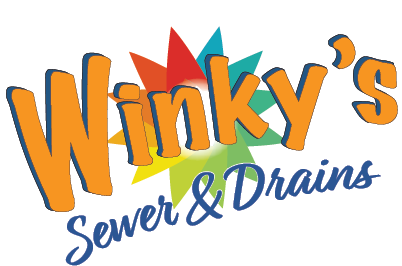Due to cast-iron pipes’ 25–35-year life cycle, many homes are experiencing a large wave of cast-iron sewer pipe problems. Your cast iron sewer pipes could fail at any time if they are 25 years or older. Before you suffer full sewer line breakdown, your drainage lines could have already been compromised by tree root intrusion, cracks, channeling, or misaligned connections. Do not allow your plumbing to deteriorate to the point of failure! A sanitary sewer pipe that has failed or collapsed would cost you much more to fix than preventive repair and maintenance. Several symptoms that your sewer line is failing and probably broken are discussed in this article.
1) Blockages and sewage overflows
As far as sanitation is concerned, sanitary sewer backups happen in the lowest usable sewer in most situations. Usually, a blockage in the sewage service line leads to a sewer overflowing. Since all drains connect to the mainline, if you have a backup, you will still have a backup. If your problem is limited to one backup, you have to focus on finding it and fixing it in that area.
2) Mold Issues
Mold growth, combined with sewage odor, may indicate a split in your sewer lines behind your walls. Molds will start growing as soon as the humidity level rises above 55%. Given this, a broken sewer pipe behind a wall can cause humidity levels to rise where mold can begin to grow. If you experience mold growth in your home along with a sewer odor, your sewage drain pipes are probably broken.
3) Use a Slow Drain
A clogged drain may be a sign that a clog is emerging, resulting in a sewage backup. If your bathroom, tub, or sink is draining slowly despite your best efforts, you could be dealing with issues like tree root invasion, channeling, or cracking, as explained earlier.
Note: If you have a sluggish drain or a blockage, avoid using chemical drain cleaners. The chemicals will accumulate in the cast iron or PVC as they remain in the pipe.
4) Grass Patches that are extra lush and green
A sewage leak underground could be causing an extra green or dense piece of grass in your backyard. Since sewage works as a fertilizer for crops, sewage runoff into the soil surface would provide additional nutrients to the grass, resulting in a lush and very green look.
5) Indentation in the lawn or in the pavement
Another sign of a broken sewer pipe is an indentation in your lawn or under pavers. A broken sewer main line that continually saturates the ground may cause the soil to dissipate. Consequently, your yard will develop an incision or rise above the point where your main drainage line runs.
How Will Sewer Pipe Issues Be Avoided in the Future?
You should get a sewer inspection done by a qualified professional like Winkys Drains if you spot any of these signs of a broken sewer line. Otherwise, it might break down at any moment, causing severe harm to your home. Since there are so many different types of sewer pipe repair, we wrote this article to help you decide between pipelining and standard pipe repair. Study it before making any decisions!

